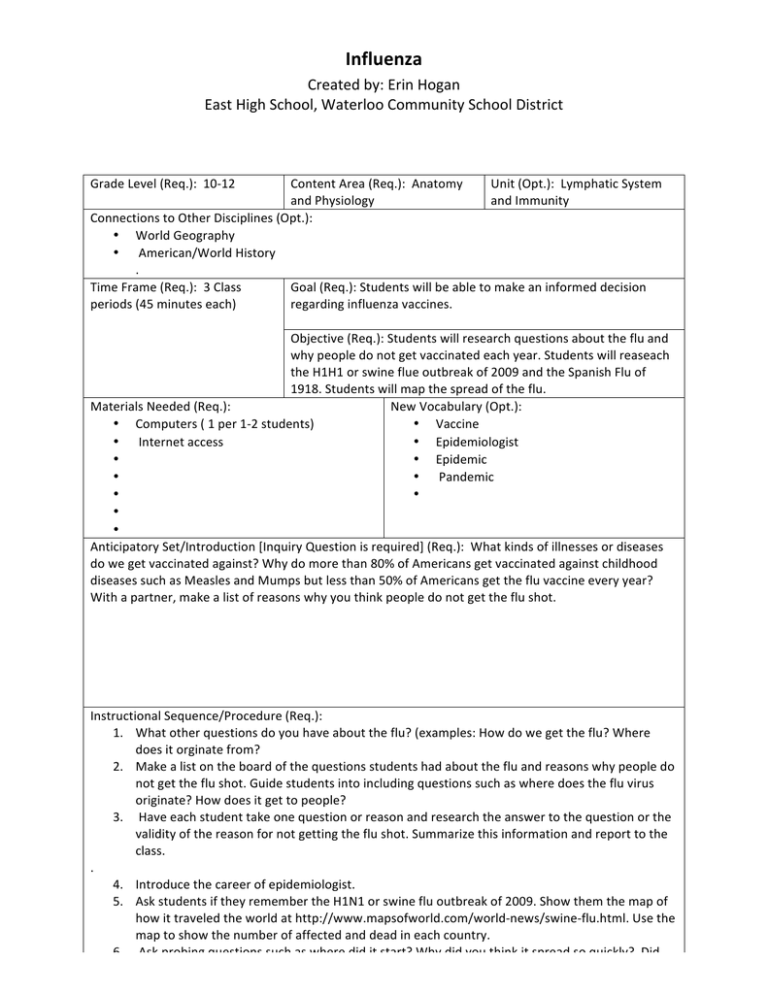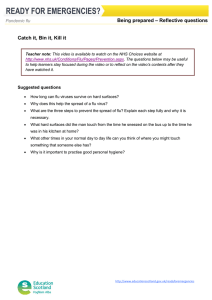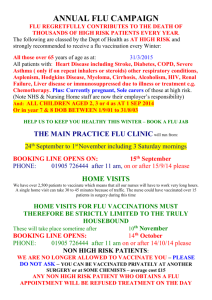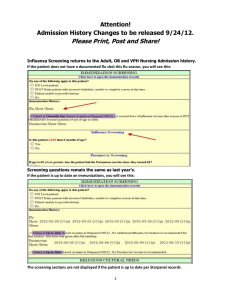Document 13937849
advertisement

Influenza Created by: Erin Hogan East High School, Waterloo Community School District Grade Level (Req.): 10-­‐12 Content Area (Req.): Anatomy Unit (Opt.): Lymphatic System and Physiology and Immunity Connections to Other Disciplines (Opt.): • World Geography • American/World History . Time Frame (Req.): 3 Class Goal (Req.): Students will be able to make an informed decision periods (45 minutes each) regarding influenza vaccines. Objective (Req.): Students will research questions about the flu and why people do not get vaccinated each year. Students will reaseach the H1H1 or swine flue outbreak of 2009 and the Spanish Flu of 1918. Students will map the spread of the flu. Materials Needed (Req.): New Vocabulary (Opt.): • Computers ( 1 per 1-­‐2 students) • Vaccine • Internet access • Epidemiologist • • Epidemic • • Pandemic • • • • Anticipatory Set/Introduction [Inquiry Question is required] (Req.): What kinds of illnesses or diseases do we get vaccinated against? Why do more than 80% of Americans get vaccinated against childhood diseases such as Measles and Mumps but less than 50% of Americans get the flu vaccine every year? With a partner, make a list of reasons why you think people do not get the flu shot. Instructional Sequence/Procedure (Req.): 1. What other questions do you have about the flu? (examples: How do we get the flu? Where does it orginate from? 2. Make a list on the board of the questions students had about the flu and reasons why people do not get the flu shot. Guide students into including questions such as where does the flu virus originate? How does it get to people? 3. Have each student take one question or reason and research the answer to the question or the validity of the reason for not getting the flu shot. Summarize this information and report to the class. . 4. Introduce the career of epidemiologist. 5. Ask students if they remember the H1N1 or swine flu outbreak of 2009. Show them the map of how it traveled the world at http://www.mapsofworld.com/world-­‐news/swine-­‐flu.html. Use the map to show the number of affected and dead in each country. 6. Ask probing questions such as where did it start? Why did you think it spread so quickly? Did you ever think that people in our day of modern medicine could die of the flu? 7. This is not the first time the flu has so greatly affected human popluations. In 1918 the Spanish 8. 9. 10. 11. 12. 13. 14. 15. 16. 17. Flu killed millions of people world wide. Give a little background to Spanish Flu : Time period, who it affected, etc. Watch portions of the video from PBS: Influenza 1918 American Experience. After viewing the video, put up a map of the world on the promethean board and ask students to be an epidemiologist and map the spread of the flu. Have students answer questions such as how it started (they believe) and how it spread from person to person. Have students summarize basic information about the influenza. . Formative Evaluation (Req.): Class discussion and Assessment (Req.): In one page or less, students questions. will explain why or why not they will/will not be getting a flu shot this year. Iowa Core Curriculum Standards Used (Req.): • Understand and apply knowledge of the interdependence of the behavior of organisms. • GE 1., Grades 9-­‐12: Understand the use of geographic tools to locate and analyze information about people and places. • Demonstrate functional health literacy skills to obtain, interpret, understand and use basic health concepts to enhance personal, family and community health. • Understand cause and effect relationships and other historical thinking skills in order to interpret events and issues. • Use digital media and environments to communicate and work collaboratively, including at a distance, to support individual learning, and contribute to the learning of others. • Apply digital tools to gather, evaluate, and use information. • HI 1., Grades 9-­‐12: Understand historical patterns, periods of time, and the relationships among these elements. • • • Common Core Curriculum Standards Used (Opt.): • • • • • NGS Standards Used (Req.): • 1. How to use maps and other geographic representations, tools, and technologies to acquire, process, and report information from a spatial perspective. • 9. The characteristics, distribution, and migration of human populations on Earth’s surface. • • • • • • • • Five Themes of Geography Used (Req.): • Human-­‐Environment Interaction • Movement • • • 21st Century Universal Constructs (Opt.): Other Disciplinary Standards (Opt.): • • • • • Other Essential Information (Opt.): Other Resources (Opt.): • • • • School District Standards and Benchmarks (Opt.): • • •




